max. overhang on gable end ladder

What’s the maximum width I can do on a gable end overhang using the ladder type construction?
Roof is 12:12, rafters are 2×6, wall-ridge span is 6′
I’ve heard 12″ is max. and any wider you should use lookouts. This jive with your experience? I’m shooting for 18″
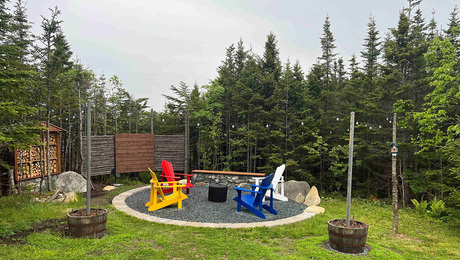
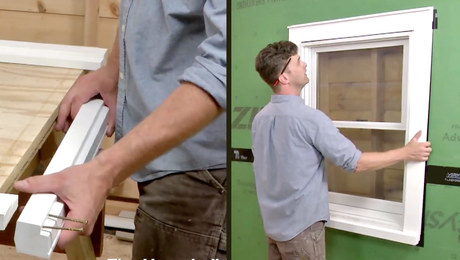
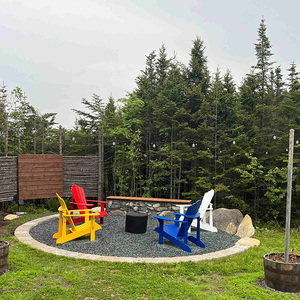
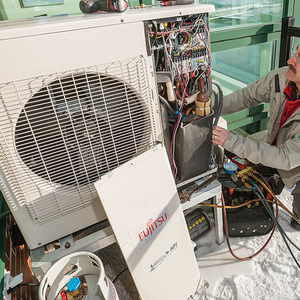
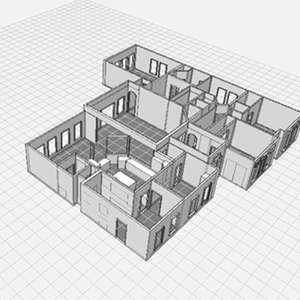














Replies
If you'll have brick underneath of the blocking I don't see anyreason why you couldn't go 18 iches. Otherwise lower your rakewall to accomodate a 2x6 lookout. I've also seen people using steel strapping from the block a few trusses back, however that doesn't solve any problems with a powerfull up drafts. I'm not sure where you live, somewhere like arizona with really no snow loads to speak of I would imagine you'll have more flexibility rather than here (toronto) where snow is a big part aswell as increasingly windyer conditions. Also if your using 2x12 rafters what you could do is notch in to accodate a 2x6 on it's flat to allow you to stiffen your overhang. Then your blocks can run allthe way back to the second rafter in.
He is in maine, I think it snows there.!
Also, using a step down truss on the gable can allow say a 2x6 T&G exposed sheathing..tied back to the first full truss and anchord well will EASILY span the 18" OH. Depending on the rake rafter details and stuff hung from it. Spheramid Enterprises Architectural Woodworks
HOW ABOUT THAT REZ GUY? UH HUH? ...He ain't Silesien I bet....wimp
I think another popular thing in the america's is to use 1x planking on all the over hangs I suspect this is so that nasty hurricane or tornado type winds cant get the first sheet off quite so easily allowing all the sheets to then be plucked offon at a time. They've pobably also come up with some sort of bracket by now aswell.
I guess you could say that...but my point was using 2x. Wind up lift not prevailing, it makes for a stout rake.
Are we clear? Spheramid Enterprises Architectural Woodworks
HOW ABOUT THAT REZ GUY? UH HUH? ...He ain't Silesien I bet....wimp
Since you are using 2x6, done well I'd say you could go all the way to 24", done poorly and even a 12" ladder will sag.
Metal straps spanning across the ladder and back at least one truss (with blocking under the straps) will help simplify the process a great deal, but the ladder still has to be as tight as humanly possible. It's easy to want to skimp on the strap length, but you'll aways wish you had bought the longer ones.
Framers may poo poo this, but I even like to slightly prop up the ladder when installing the straps so when the ladder is let down it puts the straps in a great amount of tension, as they should be. (I also block two rafters/trusses back, but don't admit since many framers think it's not necessary, but it does make a measurable difference.)
Shear your ladder. If high wind uplift is a significan't problem, there's no reason a threaded rod and Simpson shear wall connectors couldn't be used to anchor your ladder.
Cheers,
Don
Here's a picture of a house I did with 24" fly rafters. I used 2x6 flat and then 2x6 on edge nailed along side the 2x6 flat outside the gable.Joe Carola
Don,Here's another picture.Joe Carola
You're right, I'm too tired to think clearly. :-)
Nice picture
Thanks for the shots. Nice work.You're right, no trusses on mine. 2x6 rafters.Hard to tell from the pictures, but it looks like your ridge board ends at the gable end rafter, right? And your lookouts (not sure if that's the proper term, but I mean the 2x6s that extend from the overhang in several rafters) are laying in slots chiseled out of the first couple rafters?
"Hard to tell from the pictures, but it looks like your ridge board ends at the gable end rafter, right? And your lookouts (not sure if that's the proper term, but I mean the 2x6s that extend from the overhang in several rafters) are laying in slots chiseled out of the first couple rafters?"The ridge is a 2x12 and it doesn't stop at the end of the gable. It sticks past the gable 22-1/2" and is ripped so that it doesn't stick below the fly rafter.The outriggers/lookouts are notched into the rafters.This picture you can see the notch.Joe Carola
Very cool--I like the Christmas tree on the ridge.So bottom line is you wouldn't recommend doing the ladder-type of gable end if the overhang is over 12"?View Image
http://www.hwaters.com
Creative Communications | Logos | Business Cards | Websites
I've never built a ladder fly rafter before. I've always used outriggers notching into the rafters. The notches go fast because I mark them on the rafter pattern and scribe those marks on the rafters to be notched and then cut the notches on the horses.Joe Carola
Wouldn't the rafter's strength be compromised when you notch them? Isn't the 2x6 is effectively turned into a 2x4?.
blue
Wouldn't the rafter's strength be compromised when you notch them? Isn't the 2x6 is effectively turned into a 2x4?. No!I've been doing it like that for 22 years and never had a problem and my old boss who taught me that was probably doing that 20-30 years before me.Joe Carola
I've never done a house with 2x6 rafters (2x8 at smallest), and I do a combination of ladder and let in. Every 4' I'll use around a 4' long 2x4 let in, then ladder every 16". Works fine up to 18", but over that, I'd go with Joe's method.I would never just ladder any overhang... What in the gosh darn golly have you done to Rez?
I will use either method sometimes the trusses I get are dropped so I can run 2x4 or 6 lookouts, sometimes no drop and I block and strap. On reallly lond ones what I do is like what joe's picture has a doubled up rafter on the end to makeup for the notching. If I have room I just build my rake wall smaller to take the 2x4 or 6 lookouts. Really when the roof is sheathed and the walls are braced there is very little room for movement. If youre able just sending your ridge out to carry the top of the fascia you've one half the battle.
how would you do it with trusses, since you cant cut a truss2+3=7
usually you can specify to have youre gable ends sit lower to allow for these lookouts. In the past I've had plenty of roofs that did not have a lower gable truss, to impovise I will cut a 1.5 inch x 3.5 or 5.5 to add strength. I will only do this on a gable end truss which is designed to be supported underneath, ie the truss does not depend on it's engineering to hold it up, the wall under it does, even then I only notch on top of a post. If I'm really concerned where it's a really long truss or I'm in a town with very anal building inspectors I'll call the truss manufacturer, they will almost certainly tell you to put another post right underneath of the notch. Don't cut back two trusses, that will get you in trouble. I usually prefer this method to a dropped truss just because it's easier to line everything up. When the crane is on site I don't want to push and pull gable ends to make everything run perfectly together. Not to mention some truss guys can't seem to get the top cords nice and straight on the truss which can really send your blocks up and down. On a reg. gable end I snap lines and follow them atleast my fascia will be straight.
Biggest overhang I've done was almost 5 feet, 4'8 actually it was in a windy area and to boot I was building it over a completely open area only posts and beams holding it up. I didn't really know what to do to keep it down b/c I had masonary posts ontop to put my beams in and I doubt the masons tied them down to the slab. I drilled in 3/4in holes filled them with epoxy and put carpot hangers in to hold my beams. I guess well know when the roof is upside down and there are 6 concrete blocks stuck to the bottom
Nick - You're right. Surprising how little it really takes to hold them up. The one I'm on now is about 130 y/o, was moved about 85 years ago. Lookouts? Extended ridge? Nope. Whats that? The main thing holding up the flying gable is the roof sheathing. Mostly full 1", usually 6-8" wide, goes back in at least the depth of the outrigger - first rafter is about 22 inches in. Saggage? Less than I would expect. I guess a lot has to do with the quality of the old wood.
Don K.
EJG Homes Renovations - New Construction - Rentals
Nick, you really don't have to run the ridge out. The rakes will be leaning against each other and they don't have anywhere to go.
It's been a very long time since I've notched into a gable. I wouldn't notch into a truss however and I'd have to think long an hard before I'd notch into a rafter.
A neighbor called me to look into her attic because she claimed she had a broken truss. I was skeptical. She was right. Some carpenter had notched the first truss to run his lookouts back into the house 4' like Joe does. The expansion/contraction forces had broken the top chord at the notch clean through.
Notching does in fact cause some products to fail. Since I don't notch indiscriminantly, I don't have many houses behind me as a test product.
Incidently, we rarely have rakes that extend beyond 8". The largest are 12" and we still don't notch. We don't have any problems with sagging after the roof ply is properly nailed. The roof ply would have to stretch for the overhang to sag or the fasteners would have to fail. We do put extra fasteners in for 12" overhangs along with a tight ladder framing system.
blue
I normaly don't do it b/c I usually deal with trusses. I do find it a little easier for me to keep my roof peaks lining up with gable ends this way. I'm sure most framers have had wandering fascia, that is when you look at all of your peaks lining up beautifully and then at the end your fascias for one reason or another have 'wandered' it's never fun to get those back in line. I usually use the zoomboom, b/c I can lift and pull,We generally frame to a 12 in finish out here, so anywhere between 14.5 to 15.5 blocks depending on builder preference.
I definitely don't poo poo your idea, I like it, and practice it most times. I find that unless I'm willing to spend a great deal of time making my rake perfect it will always sag a little. So I put on ####small brace to hold the peak block up, not much just a little It seems to allow some forgiveness. Much easier to get one to come down than go up.
Where did Megunticook say that he was using trusses?
Joe (Framer) is right, let-in or knothced flatwork with lookouts attached will be very strong. I have been doing that for 34 years, with no problems. It is hard to argue with success.
Ridge (whatever size) is ripped ddown outside the wall for attachement of the "barge" rafter (sub-facia).
The strength of the rafter is compromised, but the gable studding restrengthens the rafter.
TX, the gable studs don't support the next rafter which was also compromised in the pictures that he posted.
Do you notch both the gable and the first rafter too?
I won't argue with success. That's why I do it my way. 30 years and not one call back for a sagging overhang! No notches!
blue
Well, as I recall we never knotched the second rafter. Framers pic is unclear. when you are effectively canting the let-ins, strengthening with plywood decking over top and butting the 2 x 4 lookout to the ledger against the wall ...that baby is tough.
I also noticed Framer has two rafters close to the ends (perhaps 3 1/2" apart as a stud space/ speculatiing)....never done that either.
Someone mentioned 2 x 6 ladder or 2 x 6 lookouts...always used 2 x 4....works with 1 x 6 facia and 1 x 2 drip edge
I am sure when you ask 10 carpenters with pride and experience working in each one, you are likely to get 10 different answers, and all will work.